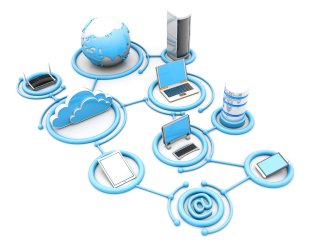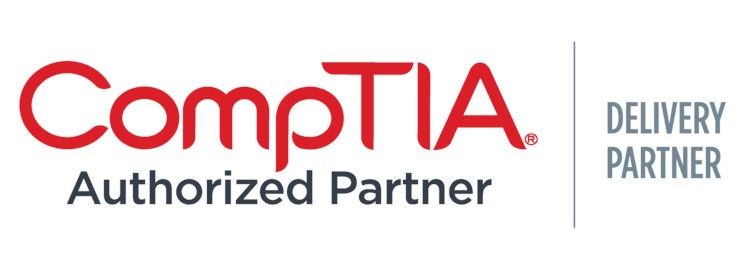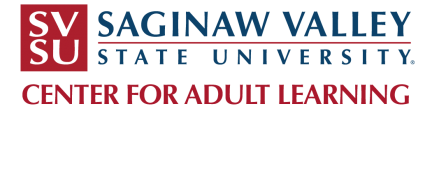
- Description
- Objectives
- Outline
- Materials
- Certification
- System Requirements
- Watch a Demo
CompTIA Linux+ is a high-stakes, vendor-neutral certification that validates the fundamental knowledge and skills required of junior Linux Administrators. This course covers everyday management of Linux-based clients and basic management of server systems. Students will learn the knowledge and tools necessary to manage Linux systems from the command line, as well as how to manage user administration, file permissions, software configurations, and Linux-based clients, server systems and security. Our CompTIA Linux+ Course prepares IT professionals for the CompTIA Linux+ certification exam XK0-006.
Recommend Experience: We recommend candidates possess CompTIA A+, CompTIA Network+ and Linux administration experience.
CompTIA Authorized Partner ID: 1298427

After completing this course, you should be able to:
- Understand Linux tools and services
- Identify how to start up, configure, and manage your system
- Recognize how to secure and troubleshoot your system
- Recall how to automate your system
- Define virtual and cloud environments
CompTIA Linux+ Module 1
Gathering Your Tools
- Preparing Your Environment
- Exploring Linux
- Introduction to Services
- Managing Files, Directories, and Text
- Searching and Analyzing Text
CompTIA Linux+ Module 2
Starting Up and Configuring Your System
- Explaining the Boot Process
- Maintaining System Startup and Services
- Configuring Network Connections
- Comparing GUIs
- Adjusting Localization Options
CompTIA Linux+ Module 3
Managing Your System
- Administering Users and Groups
- Handling Storage
- Protecting Files
- Governing Software
- Tending Kernel Modules
CompTIA Linux+ Module 4
Securing Your System
- Applying Ownership and Permissions
- Looking at Access and Authentication Methods
- Implementing Logging Services
- Overseeing Linux Firewalls
- Embracing Best Security Practices
CompTIA Linux+ Module 5
Troubleshooting Your System
- Analyzing System Properties and Remediation
- Optimizing Performance
- Investigating User Issues
- Dealing with Linux Devices
- Troubleshooting Application and Hardware Issues
CompTIA Linux+ Module 6
Automating Your System
- Deploying Bash Scripts
- The Basics of Shell Scripting
- Python Concepts
- Automating Jobs
- Controlling Versions with Git
CompTIA Linux+ Module 7
Realizing Virtual and Cloud Environments
- Understanding Cloud and Virtualization Concepts
- Considering Cloud Services
- Inspecting Cloud and Virtualization Services
- Focusing on VM Tools
- Orchestrating the Environment
Ed4Career is committed to being both environmentally conscious and making it easier for you to study! We’re making your education mobile! All of our textbooks are now provided as eTextbooks. You can access them on your laptop, tablet, or mobile device and can study anytime, anywhere.
The move away from physical books to eTextbooks means you get the latest, most up-to-date version available. This also makes your training more accessible, so you can study anywhere you have your phone or tablet. The best part is that all materials are included in your training cost so there are NO extra fees for books!
Upon successful completion of this course, students will be prepared in part, to sit for the CompTIA XK0-006 CompTIA Linux+ certification exam.
**Certification exams are not included in the cost of the course.**
Internet Connection
- Broadband or High-Speed - DSL, Cable, and Wireless Connections
*Dial-Up internet connections will result in a diminished online experience. Classroom pages may load slowly and viewing large audio and video files may not be possible.
Hardware Requirements
- Processor - 2GHz Processor or Higher
- Memory - 1 GB RAM Minimum Recommended
PC Software Requirements
- Operating Systems - Windows 7 or higher
- Microsoft Office 2013 or higher. Also, you could use a general Word Processing application to save and open Microsoft Office formats (.doc, .docx, .xls, .xlsx, .ppt, .pptx)
- Internet Browsers - Google Chrome is highly recommended
- Cookies MUST be enabled
- Pop-ups MUST be allowed (Pop-up Blocker disabled)
- The Kindle Reader App or VitalSource Bookshelf App are needed for many of our courses (No special equipment needed. This can be downloaded for FREE onto your computer.)
- PowerPoint Viewer (if you do not have PowerPoint)
- Adobe PDF Reader
- QuickTime, Windows Media Player &/or Real Player
MAC Software Requirements
- Operating Systems - Mac OS x 10 or higher with Windows
- Mac office programs or a Word Processing application to save and open Microsoft Office formats (.doc, .docx, .xls, .xlsx, .ppt, .pptx)
- Internet Browsers- Google Chrome is highly recommended
- Cookies MUST be enabled
- Pop-ups MUST be allowed (Pop-up Blocker disabled)
- The Kindle Reader App or VitalSource Bookshelf App are needed for many of our courses (No special equipment needed. This can be downloaded for FREE onto your computer.)
- PowerPoint Viewer (if you do not have PowerPoint)
- Adobe PDF Reader
- Apple QuickTime Media Player
